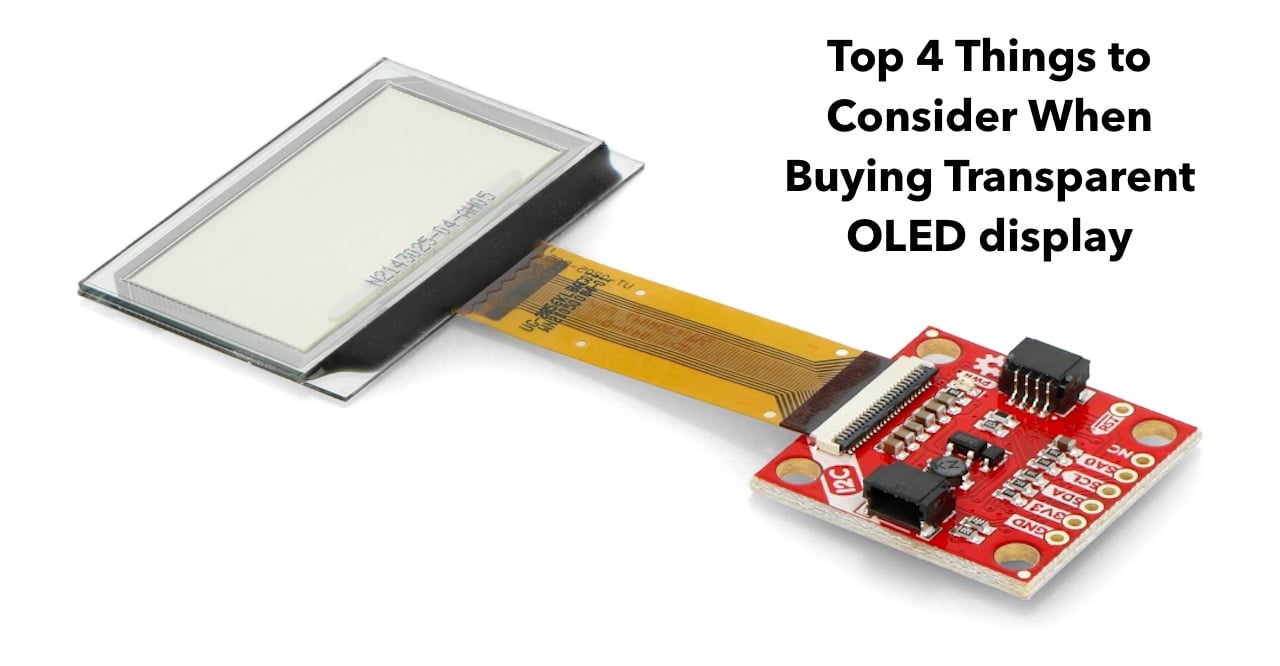Transparent OLED display screens are in demand for modern monitoring and television systems.
However, there are many versions available in the market when you research. The one you want must satisfy all your shopping and consumer needs.
That’s why you can consider this blog post. It lists the top 4 points you can consider while buying or searching for a transparent OLED display anytime soon.
First know about the basics of OLED Display:
Transparent OLEDs have three major components:
Advertisement
Content in this Article
- Substrate
- Anode
- Cathode
When you switch the system and the monitor (Transparent OLED), it will still have 80-90 per cent substrate transparency.
A Few Types Of Transparent OLED Screens Or Displays To Consider:
These are:
Top-emitting OLED
These screens have reflective or opaque substrates. These work on an active matrix. You find these OLEDs mostly in business cards, finance cards, and other smart cards.
White OLED
These are used for emitting uniform energy by fluorescent lights. These are originally made up of large sheets. These OLEDs are the best alternative to fluorescent lights or bulbs in homes, buildings, and apartments.
Using them is a cost-effective affair.
Foldable OLED
These OLEDs have flexible metal or plastics that allow them to fold to a certain degree. They are durable, reliable, fun to use, and lightweight. Most new smartphones have these OLEDs.
These can also be used in smart clothing materials.
The Top 4 Things To Consider To Buying The Transparent OLED Screen or Display Are:
Specifications:
There will be a lot of specifications you can find online while studying and researching OLED transparent display screens. The ideal ones can be with
- 55-inch screen size,
- 1920 x 1080 resolution,
- HDMI and other interfaces,
- A customizable frame of the enclosure,
- Best for TV screens, computer monitors, and kiosks at trade events and exhibitions.
With such specifications, you can find transparent OLEDs that are multi-functional, easy-to-use and -install, and affordable. Most modern electronic dealers and sellers are up for selling OLEDs meeting these specifications.
Delivery Details:
Noting the delivery details is crucial whenever you’re buying a transparent OLED. That is even more important if you’re ordering it from another state or country. The delivery policy must offer you the ticket number and the right steps to follow through or track.
The dealer should list how they are going to deliver the product. For example, through roadways, water, or airways. It depends on the area of product packaging and where it needs to be delivered.
Check the approximate time it takes to deliver to your locations or zip/pin code.
Is there any delivery insurance added to this service? Or do you have to take it as an add-on?
What is the minimum number of units or weight of the product you order for free delivery to your address?
Get such questions answered with your dealer for a seamless purchase thereon.
Packaging Details:
The cost of transparent OLEDs is usually higher concerning their packaging. That’s in comparison to other display screens.
The packaging team has to glue the OLED display to an ultra-white glass. It should or must have a 4-6mm thickness for being an ideal solution to maintain OLED’s transparency while it is in transit.
For longer distances, for example, from the USA to China, many delivery persons will be handling a single product. So the dealer has to ensure that they have a packaging case for storing the product as a final protective layer for longer distances.
These cases must be hard, protective, and sustainable. These can have handles on both sides for an easy-to-carry feature – keeping the courier’s task in mind at any given point.
Custom Product Details:
You might want to get an OLED designed yourself. For that, you have to initiate this conversation with the manufacturer or the wholesale dealer. You have to ask what kind of designs are available to them for tweaking those around.
Note the total cost that you would bear if you recommend many changes in the given model or screen. Do not forget to include the packaging, shipping, insurance, delivery, and installation charges, if any.
For a fully customizable product, you must have a mechanical design ready. Show it to your dealers. Let them get back to you. Then come to a final decision if they can arrange the same product with a defined budget or not.
Rest is up to you, of course.

